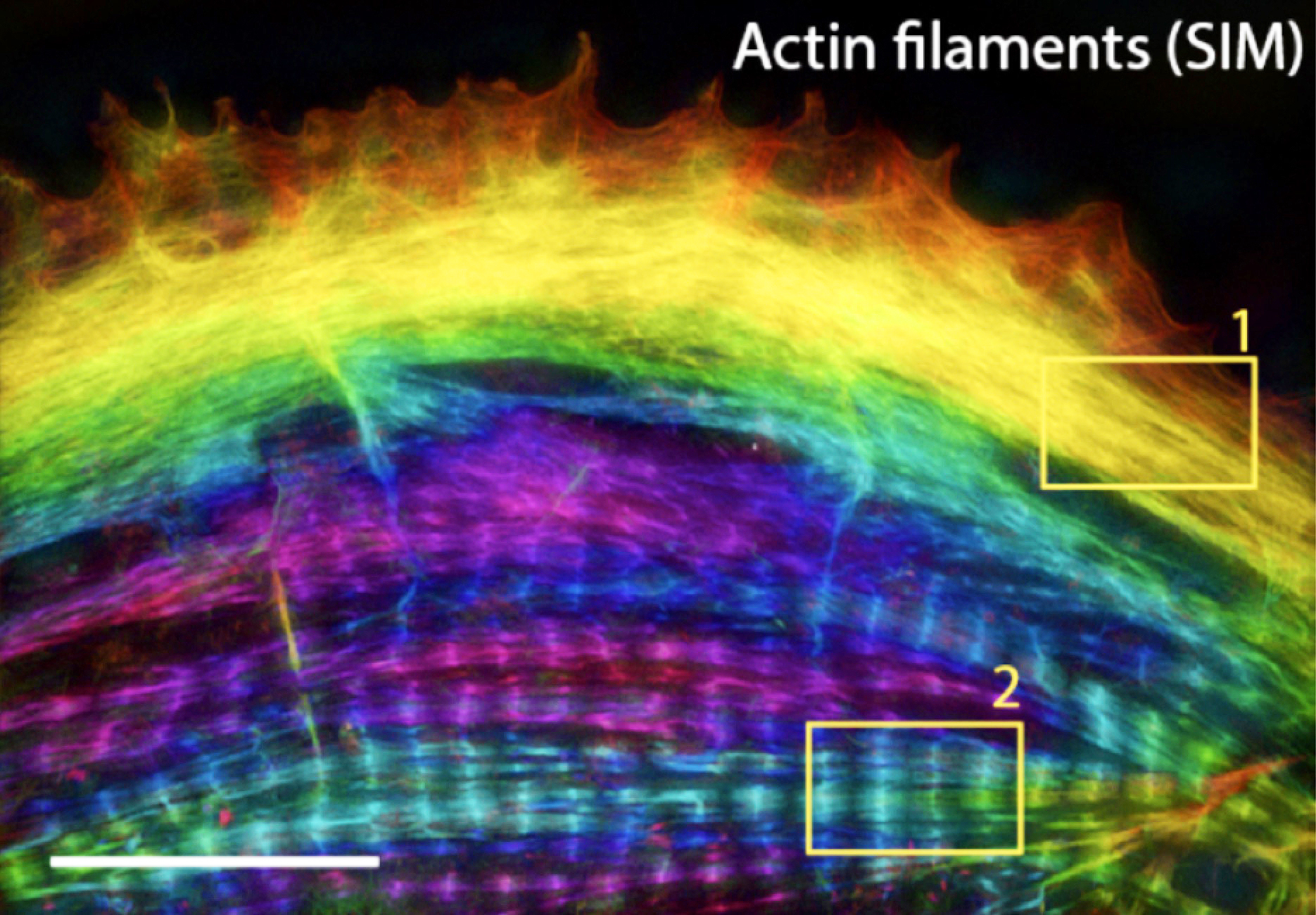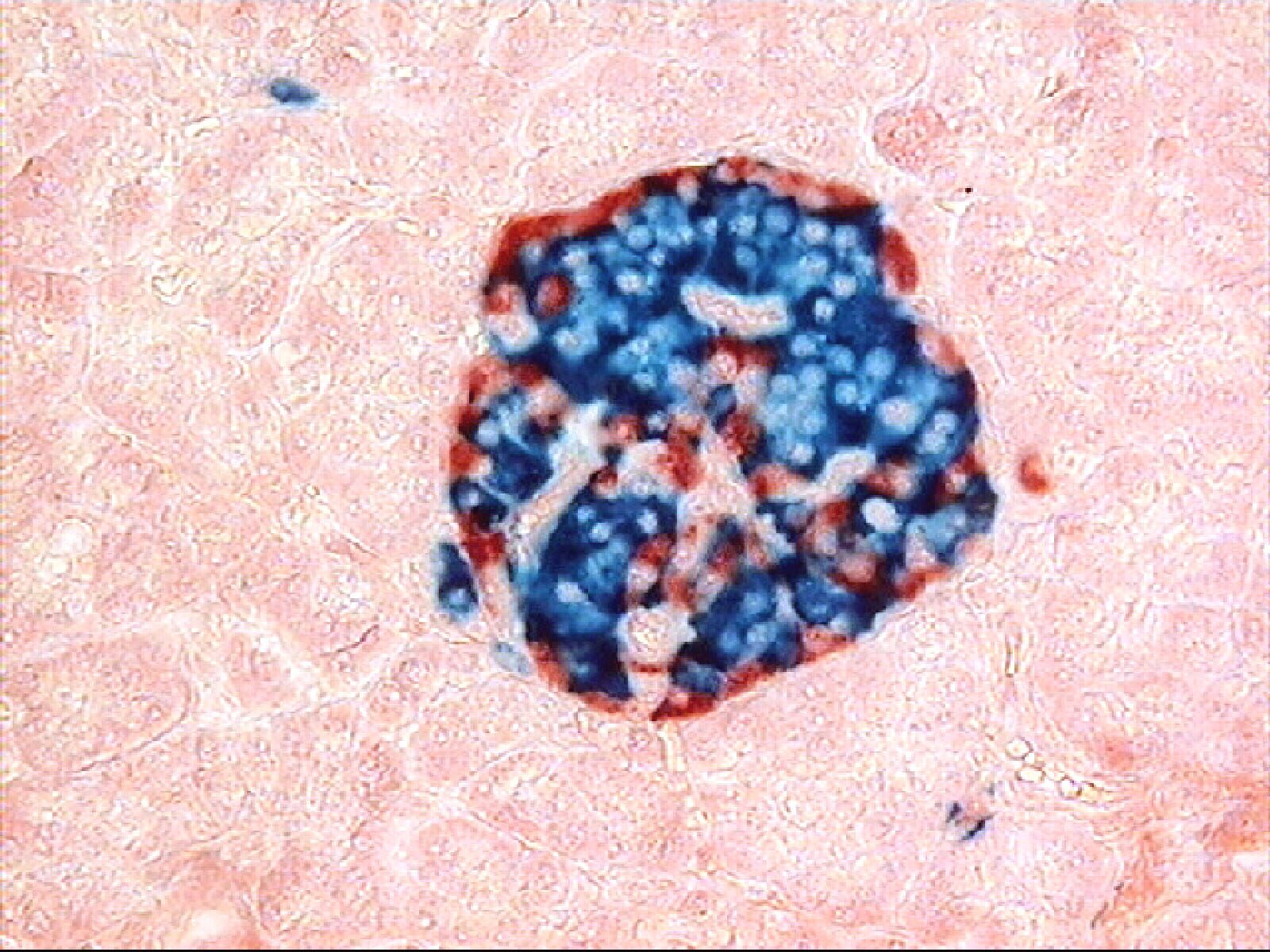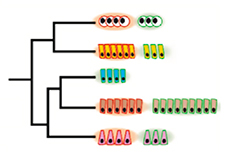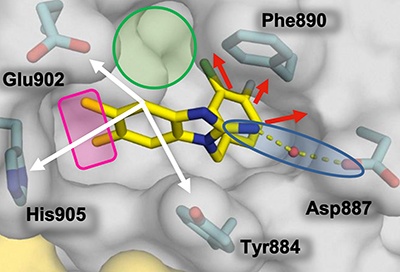Discoveries
-

Keys to Sarcomere Assembly
Figure reproduced under the Creative Commons Attribution (CC-BY) license from A. M. Fenix, et al. (2018) eLife, published December 12, DOI: 10.7554/eLife.42144. The sarcomere is a repeating unit of interdigitating actin and myosin filaments that serves as the building blocks of the myofibrils in striated muscle cells. Sarcomeres are demarcated… Read MoreDec. 17, 2018
-

HMCES: A New Guardian Against DNA Damage
In DNA, abasic sites (apurinic/apyrimidinic or AP sites) occur through spontaneous hydrolysis of the glycosidic bond that joins the base to the deoxyribose ring (a common reaction following formation of some kinds of DNA adducts) or through the action of DNA glycosylases during repair of damaged bases. In double-stranded DNA,… Read MoreDec. 14, 2018
-

New Revelations from Single-Cell Cytomic Data
Figure courtesy of A.R. Greenplate. Copyright 2018. Cytomics, the “omics” of cell identity, offers the opportunity to systematically identify all cells in a tissue or patient sample, and the recent advent of high-dimensional flow and mass cytometry to the cytomics arsenal has markedly increased its power. Cytomics is particularly valuable… Read MoreDec. 12, 2018
-

A Close Look at β-Cell Transcription Factor Function
Over 27 million people in the United States are living with type 2 (adult onset) diabetes. In most cases, type 2 diabetes results from a mixture of multiple genetic and environmental factors. However, in a small subgroup of patients, mutation of a single gene leads to the form of type… Read MoreDec. 4, 2018
-

How Cancer Cell Death Can Thwart Therapy
Apoptosis is a mechanism of cell death that occurs in normal tissues as part of natural cell turnover and remodeling. Apoptotic cells are cleared by efforcytosis, a specialized form of phagocytosis mediated by MerTK, a receptor tyrosine kinase expressed by many phagocytic cells. MerTK recognizes a combination of ligands, such… Read MoreDec. 4, 2018
-

Exploring Single Cell Data with sc-UniFrac
Our growing ability to acquire data at the level of single cells in complex samples provides exciting new opportunities to understand physiological and pathophysiological processes; however, it also presents daunting challenges for the statistical evaluation of the resultant huge datasets. To date, most experimental approaches have focused on identifying the… Read MoreOct. 25, 2018
-

A New Approach to RAS Inhibition
A New Approach to RAS Inhibition Image reproduced with permission from T. R. Hodges, et al., (2018) J. Med. Chem., published online September 11, DOI: 10.1021/acs.jmedchem.8b01108. Copyright 2018 American Chemical Society RAS is a small protein that acts as a molecular on/off switch to modulate numerous signaling pathways that… Read MoreOct. 10, 2018
-

Promoting Immune-Mediated Therapy in Breast Cancer
Promoting Immune-Mediated Therapy in Breast Cancer Image courtesy of Dr. Steven Harmes. Baylor University Medical Center, Dallas Texas. Despite major progress in early diagnosis and treatment, breast cancer (BC) remains the second leading cause of cancer deaths among women in the U.S. A promising new approach to cancer therapy… Read MoreOct. 10, 2018
-

Elongating Microvilli in the Intestine
Elongating Microvilli in the Intestine Enterocyte showing Brush border and unstirred layer Author: Boumphreyfr Enterocytes, the epithelial cells lining the lumen of the intestine, develop a dense lawn of microvilli (MV) on their apical surface as they differentiate from stem cells in the intestinal crypt. We know that MV… Read MoreOct. 10, 2018
-

A Path to Insulin Resistance in Diet-Induced Obesity
A Path to Insulin Resistance in Diet-Induced Obesity Increasing evidence indicates that inflammation in adipose tissue (AT) contributes to insulin resistance and other metabolic abnormalities frequently observed in obesity. We know that macrophages in AT play an important role in obesity-associated inflammation and that obese AT can activate proinflammatory… Read MoreOct. 10, 2018